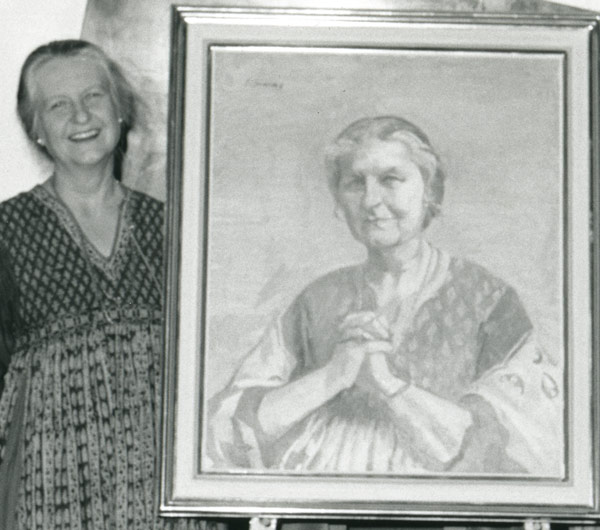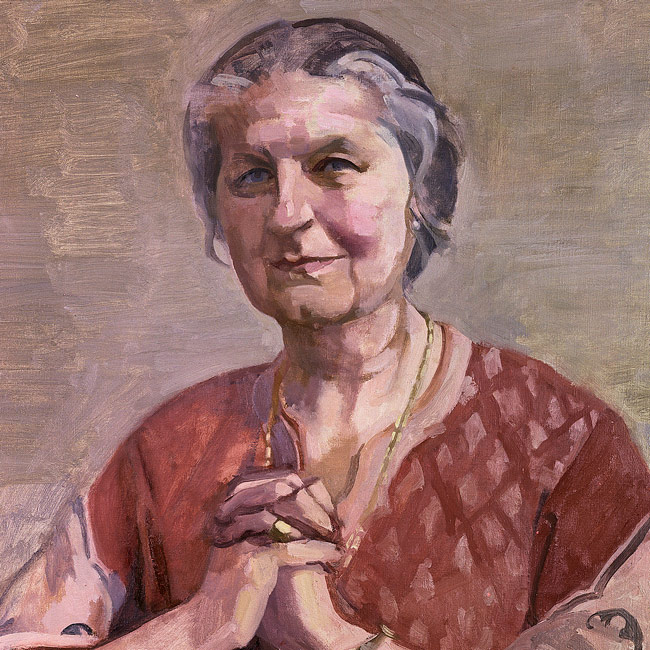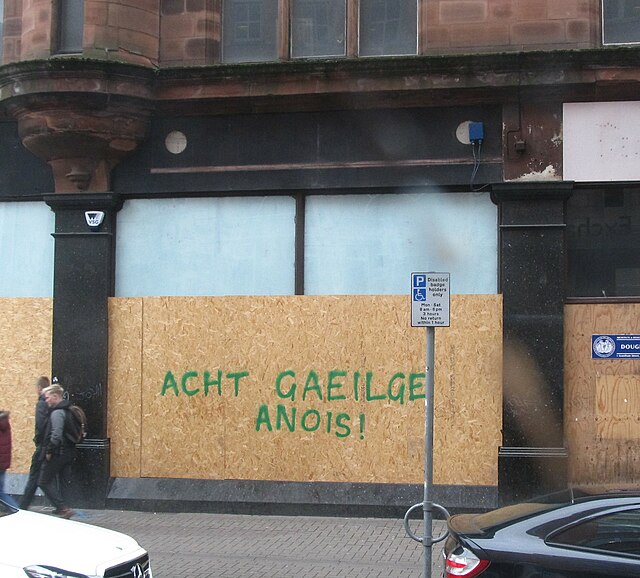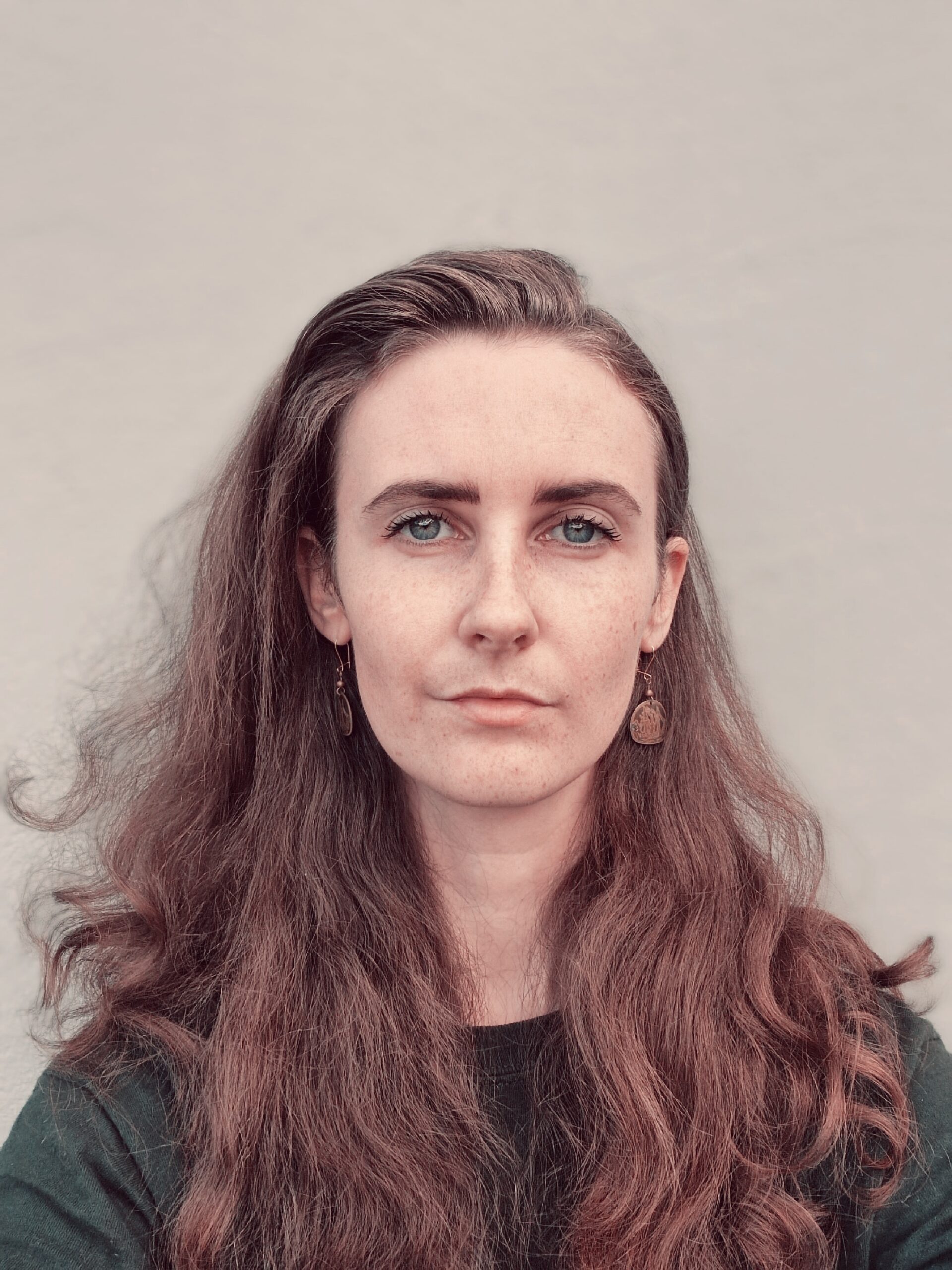The same year the Department of History of Art and Architecture celebrates its 50th anniversary, it also mourns the passing of Prof Emeritus Anne Crookshank, the woman who founded the department in 1966. Described by those who had the distinct pleasure of knowing her as witty, trailblazing and larger-than-life, she was a force to be reckoned with.
Born in Belfast on January 3rd, 1927, she spent the first five years of her life in India where her father was working for the Geographical Survey. Her room in the Rubrics and later her house in Donegal were decorated with various trinkets and reminders of her time spent in India. Most notably, in her room in the Rubrics, “there was a chaise longue in the middle of the room, which had tiger skin draped over, with the head. Anne used to prop herself up on that, and her father shot the tiger in India … so sometimes she would just lie there and talk about India on the tiger”, revealed Dr Rachel Moss, Head of Department and an Assistant Professor specializing in medieval Irish art and architecture, speaking to The University Times. In addition to being taught by Crookshank at an undergraduate level, Moss worked alongside her in the research of Irish art. Crookshank later studied history at Trinity before attending the Courtauld Institute in London to complete a master’s degree in history of art. Following this she took a job at the Tate Museum in London before working for the Witt Library, a library of photographs of works of art rather than a book-based collection, which is located in the Courtauld Institute.
Her pioneering nature was evident long before she founded the department in Trinity. While she was working as the keeper at the Belfast Museum and Art Gallery, now the Ulster Museum, she was relentless in her choices to purchase more contemporary works, a decision that was somewhat unpopular at the time. “She started buying things like William Scotts and artworks that at the time, especially in the north, which would have been hugely conservative, was seen as not the done thing. She fought, and she would have been quite young at that stage”, explains Moss. This set the stage for her work in Trinity in establishing the faculty.
She had to be tough. And this is not a time in Trinity College, or in any college, where women rose as she did
College in the year she founded the department was a very different place than the institution familiar to many students today. “She had great stories about her time in Trinity College when there wasn’t a women’s toilet. She had to go across the front of College to a hotel. Women had to be signed in”, explains Dr Peter Cherry, an Assistant Professor in the department, speaking to The University Times. “She had to be tough. And this is not a time in Trinity College, or in any college, where women rose as she did”, he continues. Crookshank’s status as a woman is crucial to better understanding the tumultuous obstacles she faced in working in the College as an academic and founder of a department. Dr Edward McParland, Pro-Chancellor of the College and a former lecturer in the department who Crookshank hired in 1973, elaborates on this, speaking to The University Times: “She was a scholar and on the Trinity Monday, when she was elected to scholarship, she was not allowed attend the scholar’s feast being a woman. And she made a vow then that she would never dine on Commons. Ever. And she didn’t.”
This perseverance is evident in her battles with cancer. She was relentless. “She never complained. She just went on. She led trips to India and everything”, says Dr Christine Casey, Associate Professor in architectural history to The University Times, attesting to Crookshank’s conviction.
Despite her booming Anglo-Irish accent, her “Irishness” was a distinct feature of Crookshank’s character and her motives as an academic. “She was tremendously committed to working for Ireland … she would be enraged if people didn’t appreciate that Ireland was absolutely at the centre of her commitment”, explains McParland. This “Irishness” is translated in the work she completed with Desmond FitzGerald, the 29th Knight of Glin, in their research in Irish art and architecture, which is now stored in Triarc, the Irish Art Research Centre. The Knight and Crookshank donated their archives, which contained files, photographs and correspondence to the research centre, providing a reference point for Irish painting and sculpture. Through their collective work, the Knight and Crookshank archived and collected thousands of works of art and architecture from Irish artists and architects from the 18th to the 20th century, creating a huge database for students, scholars and academics alike. In some cases, they even re-introduced forgotten about artists onto the Irish arts scene. Their research and photographs are published in three books: Irish Portraits 1660-1860, The Painters of Ireland c.1620-1920 and The Watercolours of Ireland, seminal works, both in Ireland and abroad, in the development of the study of Irish painting and architecture.
Anything to do with Irish art, she would have been the one to go to internationally.
Crookshank was, in addition to being a key academic on the Irish arts scene, hugely important on an international level. “Her work with the Knight put Irish painting into pre-eminent position in the international market”, explains McParland. “Anything to do with Irish art, she would have been the one to go to internationally.” Their three crucial works, as well as their photographs and research, are at the forefront of scholarship on Irish art and architecture on an international scale. Dr Philip McEvansoneya, an Assistant Professor in the Department of History of Art and Architecture, echoes these sentiments, stating that “they have had a very important role in the English-speaking art historical world because they are standard works, pretty much for the subject matter”.
Though her demeanor was serious and scholarly, she was a bon vivant. “She was tremendously energetic, she was fantastically good fun. She loved a party”, states McParland. “I remember going to lunch with her in the common room, and [R B McDowell] published a book, and there was a photo in the middle of the book of him with Mick Jagger. And Anne was a really good friend of R B’s, so I remember her being asked: ‘How did R B McDowell know Mick Jagger?’. She just turned around and went: ‘My dear, everybody knew Mick.’ And started to tell us about parties they used to have down in Glencastle”, Moss says with a chuckle.
Her love of cats becomes evident through speaking to those who knew her both professionally and personally. She became somewhat of a foster mother to the stray cats of Donegal and Dublin. “Before she fully moved out to Donegal, she had a flat in Grangegorman, and she kept cats there. And so the PhD students of the department would often end up minding them when she way away”, Moss continues, “she was very caring towards them”.

“Her impact on students was immense”, states McParland. A fact that cannot be emphasized enough. Her engagement with the students, her passion for the study of history of art and architecture and her kindness towards students and staff are highlighted through speaking to various members of staff, both past and present. Casey further elaborates: “She was hugely enabling, and I saw that she had actually quite a few mature students who came here and ended up as full-time art historians because of her.” Her love and passion for art and architecture was infectious. “If it weren’t for her, the department wouldn’t be here”, Moss asserts. The impact she had on students is still felt today.
She was a force behind understanding of art, engagement with art, of making art more international, of engaging with what was happening in contemporary art
Art simply spoke to her. There was a reciprocal relationship when she would look at a work of art or architecture, evidenced through her deep appreciation and understanding of the essence, almost as if the art and artist were speaking to her. “There’s no question in anybody’s mind that she was a force behind understanding of art, engagement with art, of making art more international, of engaging with what was happening in contemporary art”, states Dr Angela Griffith, an Assistant Professor in the department, to The University Times. Crookshank was engaged with art on a personal as well as academic level and took a connoisseurial approach to the study of the history of art and architecture.
Speaking to The University Times, Ruth Sheehy, the department’s photographic and slide librarian, remembers “her indefatigable energy on departmental trips”. The yearly departmental trips to a variety of cities across Europe are a highlight for history of art and architecture students. Crookshank realised the value of seeing and appreciating art up close and personal, and in lieu of flowers, Crookshank’s nephew requested that donations be made to the student travel fund, facilitating students to take part in the trips. “She would always have been very hot on that because she realised it’s so important to go and to experience art first-hand … even if one student is deeply inspired by standing in front of a painting in Florence”, Moss says, highlighting Crookshank’s sentiments towards the importance of travel in engaging with and better understanding art and architecture.
In terms of honoring Crookshank’s legacy, Moss looks towards continuing the archive set forth by Crookshank and the Knight, which is now located in the Provost’s House Stables as part of Triarc. She explains: “Ultimately, it would be fantastic, particularly as an Irish art resource because a lot of it would be Irish architecture and Irish art.” To continue Crookshank’s vision in archiving and bringing to light the history of Irish art and architecture is the ultimate testament to her legacy.
Along with the 50th anniversary celebrations in the new year, the department is set to celebrate the life of Crookshank because, according to Cherry and a sentiment that is echoed throughout the department, “founding this department, doing all that she did, she really found a home here, an intellectual home, and we’re all indebted to her”.







